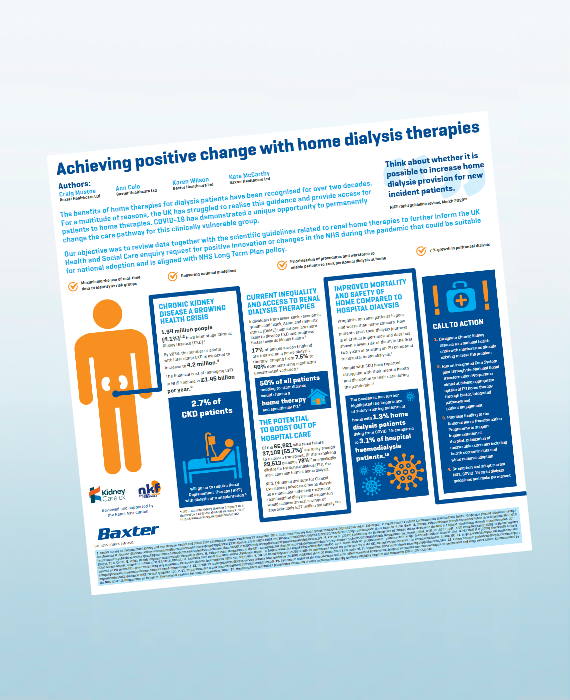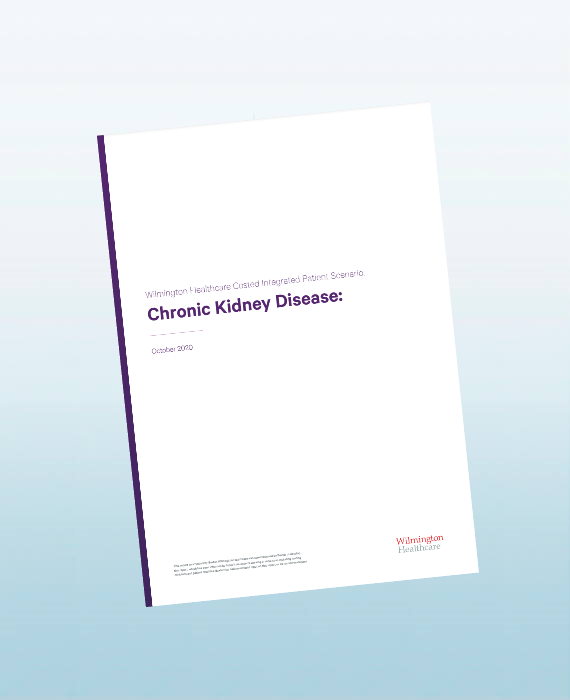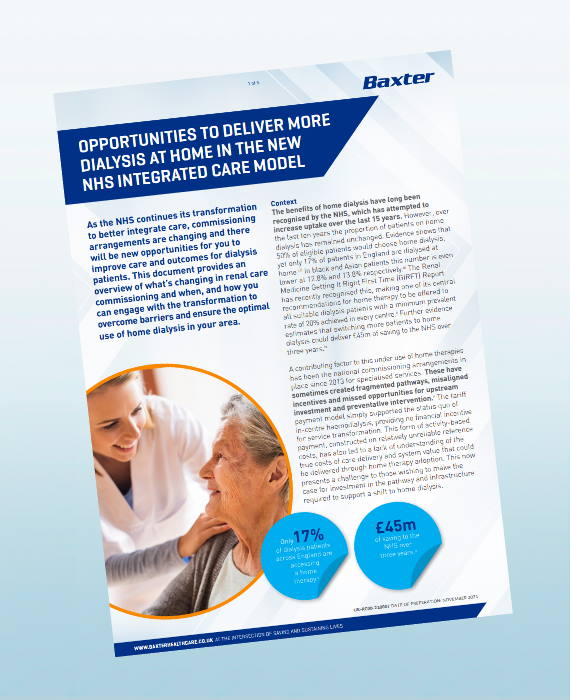
Explore opportunities to deliver more dialysis at home
The benefits of home dialysis have long been recognised by the NHS, which has attempted to increase uptake over the last 15 years. However, over the last ten years the proportion of patients on home dialysis has remained unchanged; only 17% of dialysis patients in the UK are accessing a home therapy1. The Renal Medicine Getting It Right First Time (GIRFT) Report has recently recognised this, making one of its central recommendations for home therapy to be offered to all suitable dialysis patients with a minimum prevalent rate of 20% achieved in every centre2.

Facts about Chronic Kidney Disease (CKD)
CKD is an irreversible long-term condition where a person’s kidneys no longer perform as they should and can lead to kidney failure3.
The cost of CKD to the NHS was estimated to be £1.45 billion in 2010; 1.3% of all NHS spending that year. Over half of this (£780m), was spent on patients undergoing Renal Replacement Therapy (RRT), despite these patients comprising less than 2% of the total CKD population3.
There are currently around 3 million people in the UK living with CKD and 63,000 living with stage 5 CKD. This number is expected to rise, with more than 4.2 million people expected to be living with the more severe stages of CKD by 20364.

Choices for people with CKD
Around 10% of people with CKD will reach kidney failure and require renal replacement therapy (RRT)5. The ideal scenario is for these patients to receive a pre-emptive kidney transplant.
Unfortunately, this option is not possible for everyone either because of a lack of available donors, medical complications or patient choice. Currently approximately 8% of people starting RRT in England will have a pre-emptive transplant1.
The other 92% of RRT patients will be required to start on dialysis to manage their condition, which can be delivered at a specialist renal centre, a satellite hub or at home.1
The optimal scenario for both patient and the NHS is that, where appropriate, people receive their dialysis care at home6. Home therapy may offer benefits in terms of patient experience and quality of life. However, over the last ten years the proportion of patients on home dialysis has remained unchanged. On average only 17% of dialysis patients across the UK are currently accessing home dialysis1.

Achieving Positive Change with Home Dialysis Therapies
Chronic Kidney Disease (CKD) is a growing health crisis with around 4.1% of individuals in the UK having later stage CKD. Covid-19 demonstrated a unique opportunity to permanently change the care pathway for this clinically vulnerable group

Chronic Kidney Disease Costed Integrated Patient Scenario:
Early diagnosis and prompt treatment of CKD saves both lives and money. Using a fictional patient with CKD we examine an optimal pathway onto dialysis. At each stage we have modelled the costs of care, not only financial to the local health economy, but also the impact on the patient and their family’s experience.

As the NHS continues its transformation to better integrate care, commissioning arrangements are changing and there will be new opportunities to improve care and outcomes for dialysis patients. For people with CKD, the creation of Integrated Care Systems offers an opportunity to transform renal services and improve access to home therapy, ending variation in access to treatment options. This will not only improve care and outcomes for people with CKD, but will also help deliver on system-wide NHS objectives to:
- Improve population health and healthcare
- Tackle unequal outcomes and access
- Enhance productivity and value for money
- Support broader social and economic development